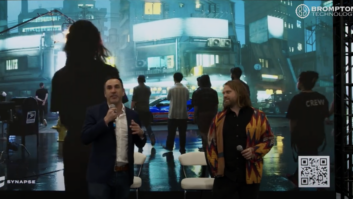Amber Solutions has launched a solid-state based Energy Traffic Controller with embedded intelligence that it says enables on-the-fly switching of building electricity sources. The company says that the new capability relies on the its “breakthrough digital control of electricity to provide state-of-the-art electricity management”.
Company founder and CEO, Thar Casey, said, “Amber’s solid-state upgrade to 1950’s-era building electrical is much more than a modernisation of outlets and light switches,” he said. “It is the fundamental integration of state-of-the-art intelligence throughout a building’s electrical grid and endpoints. Our new Energy Traffic Controller application is a leading example of the technology’s disruptive nature, enabling the ability to intelligently and, automatically, alternate sources of power to reduce costs, maximise efficiency and guarantee steady power.”
According to the company, the device is installed next to the circuit breaker box so it can read and understand a building’s energy demand and available electricity sources, thereby supporting “autonomous source optimisation”. It would assess the available data to make decisions, using metrics such as the price and stability of grid energy during peak hours, the availability of solar power and the current charge level on any connected battery back-ups.
The controller works with a range of Amber powered solid-state building electrical solutions, but also works independently of other Amber systems as a standalone system.
“Amber’s mission is to disrupt building intelligence as profoundly as smartphones disrupted the use of flip cell phones by upgrading such single-use tools to offer a transformative array of advanced functions,” Casey added. “Similar to how autonomous vehicles will communicate in real time to make proactive decisions that can avoid collisions, increase safety, decrease jams or improve fuel efficiency, the Energy Traffic Controller enables buildings to more intelligently source and allocate power to eliminate waste and maximise utilisation.”







